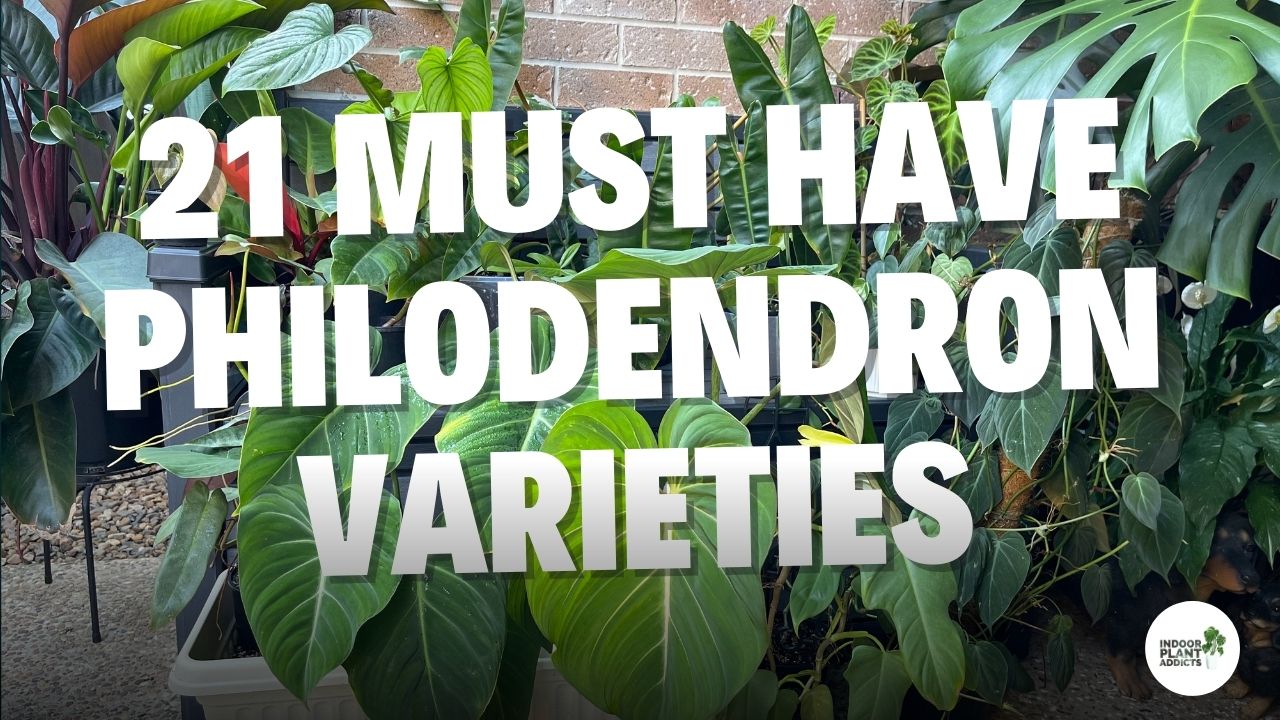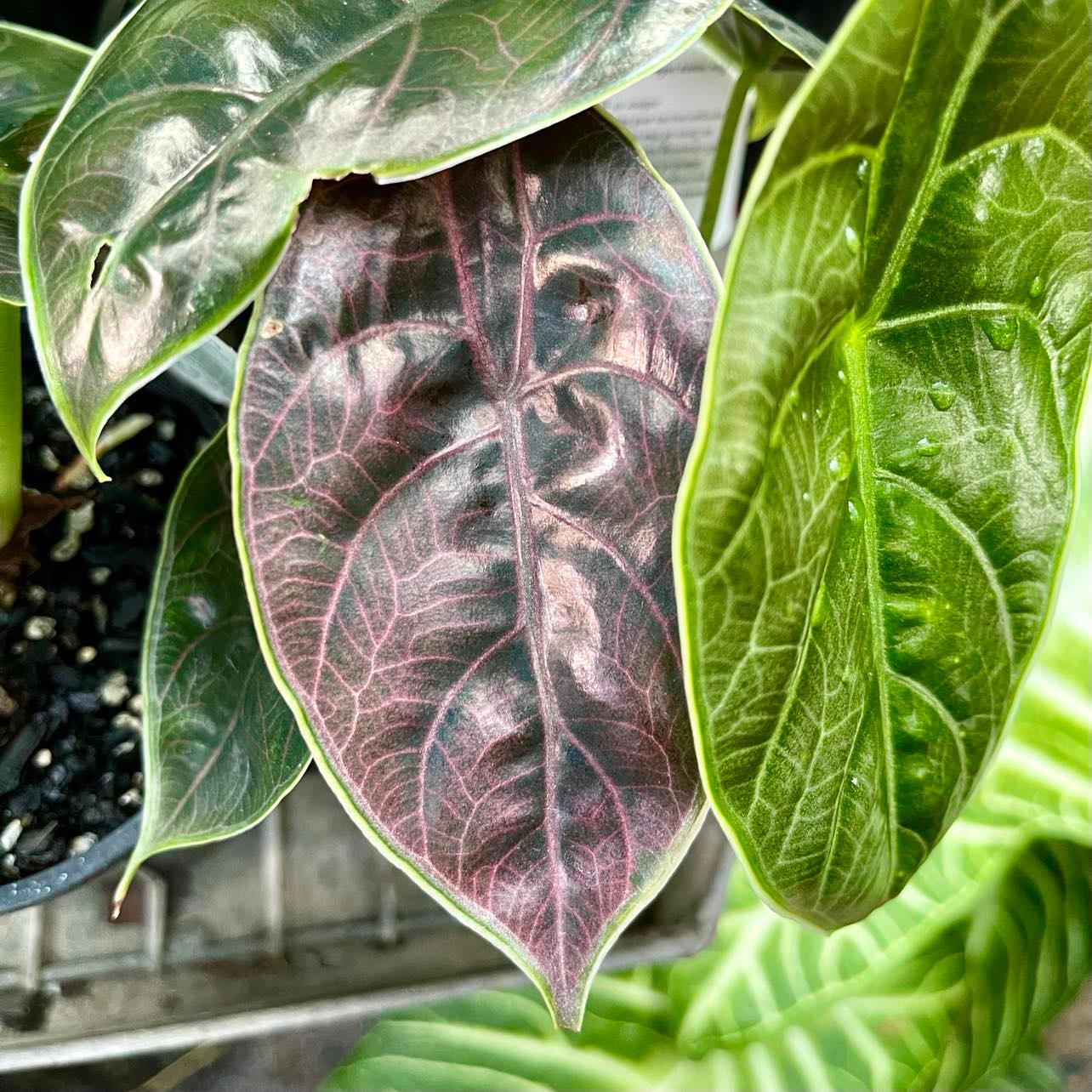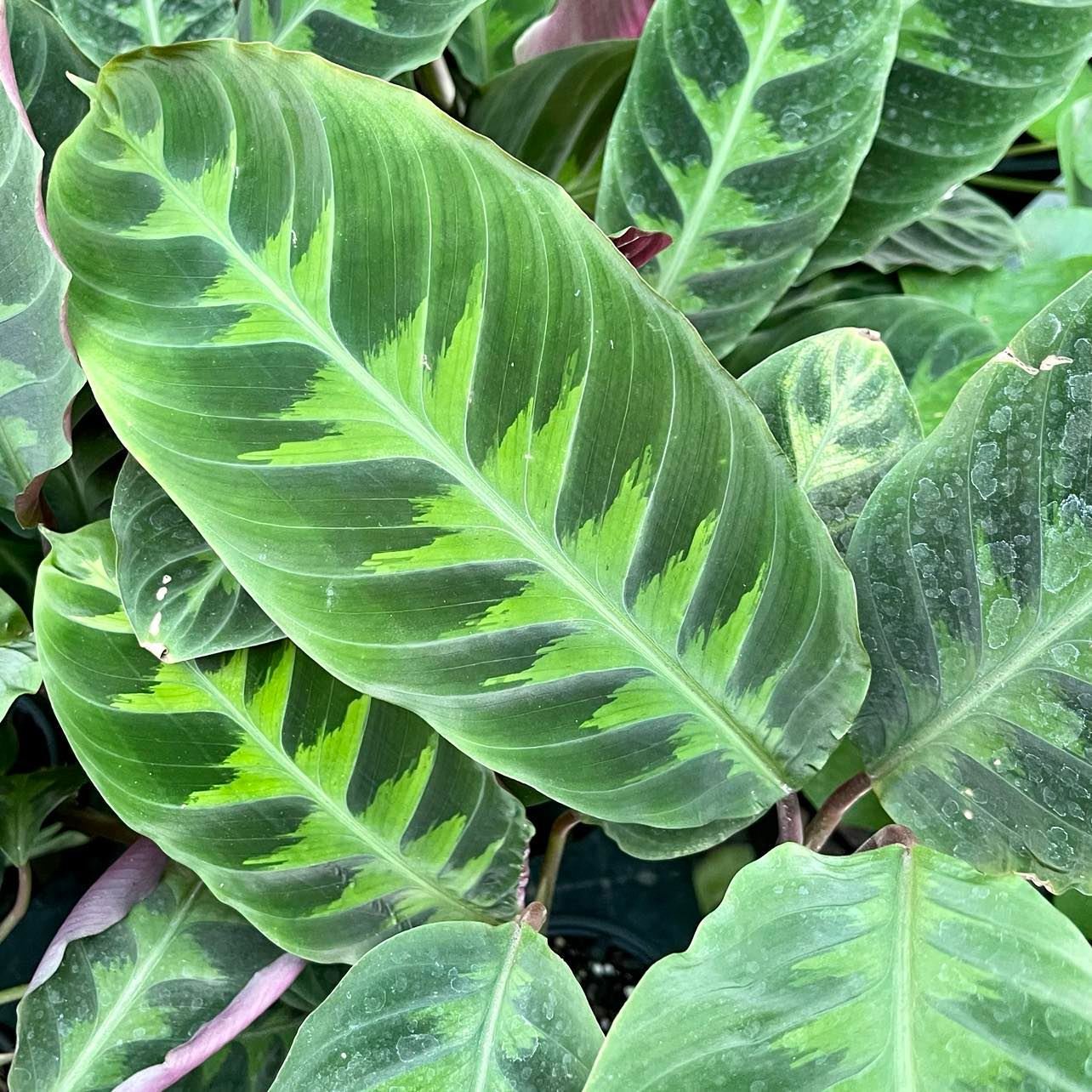Syngonium Podophyllum Mojito a.k.a Syngonium Mojito, Mottled Syngonium, Arrowhead
The Syngonium Mojito is a vining plant with arrow shaped mottled light and dark green variegated foliage. This plant is low maintenance and fast growing and would look good climbing up a pole or in a hanging basket. Syngonium Mojito is part of the Araceae family and native to West Indies, Southern Mexico and Central and South America. Since this plant is from tropical rainforests, it loves a warm and humid environment.

Syngonium Mojito Quick Overview
| Full Size | 6 feet |
| Light | Bright indirect light |
| Temperature | 60ºF-95ºF (15ºC-35ºC) |
| Humidity | Above 60% |
| Cost | $$ |
| Care Level | Easy |
| Toxicity | Toxic |
Size
The mature size of a Syngonium Mojito can be upwards of 10 metres. In the wild, these plants a generally seen crawling along the ground or climbing up trees and other plants. The typical full grown size of Syngonium Mojito when kept indoors as a trained vine is around 3-6 feet in length and around 1-2 feet in width.
This plant can be trained to grow up a trellis/pole or you can have it in a hanging basket. Providing something for the plant to climb will encourage larger leaves. If you’re after a bushier plant, as the vines start to grow out, cut them off with a pair of pruners.
You can then propagate these cuttings if cut correctly below the node. They will root fairly quickly in either water, spaghnum moss, LECA or moist soil. Once established they can be planted back in with the original plant to create the desired bushy effect.
Light Requirements
Syngonium Mojito will grow best when in medium to bright indirect lighting. It’s best to try and avoid any direct sunlight as the harsh rays can burn the foliage. In order to keep the beautiful variegation, the plant needs to be in a spot where it’s receiving adequate lighting.
A sign that your Syngonium Mojito isn’t receiving enough light is the plant becoming leggy, yellowing leaves, losing variegation and/or stunted growth. This can be resolved by changing the position of your plant to somewhere that better suits its light requirements.
If your plant is housed in a spot that receives direct sunlight, adding a blind or curtain to your window will help to defuse the harsh sunlight to avoid burning the plants foliage. Alternatively, if you can’t seem to find that perfect spot in your home, you can always use grow lights.
Just like direct sunlight, if your plant is sitting too close to the grow lights, they will burn the foliage. Keeping a safe distance of at least 60cm between your plant and the light will avoid any trouble.
Temperature
The ideal temperature for growing Syngonium Mojito is between 60ºF-95ºF (15ºC-35ºC). Since this plant is from tropical rainforests, it loves a warm environment and can be quite sensitive to the cold.
If the temperature is expected to drop below 50ºF (10ºC), you should move your Syngonium Mojito to a warmer spot in your home. You should also try and keep the plant away from drafty windows, doors and heating and cooling vents.
If your plant is kept in conditions below this temperature bracket for prolonged periods of time, you can expect it to develop health issues, seize growing or plant death.
Humidity
Syngonium Mojito will thrive when kept in a humidity environment above 60%. However, this plant can be tolerable of an average household humidity (30%-50%). A sign that your Syngonium Mojito requires more humidity is curling and crispy leaves. Keeping your plants in a spot where the humidity is too low can make them more vulnerable to pests and diseases.
Providing a high humidity for your plants will encourage bigger and healthier growth. There are a few thing you can do that can help bump up the humidity in your home. The things you can try are:
- Misting your plants
- Pebble trays
- Grouping plants together
- Humidifier
Watering Requirements
You can expect your Syngonium Mojito to require moderate watering (at lease once a week). This will change throughout the cooler months when the temperature and amount of sunlight is changing.
Before watering your plant, you should check the top 1-2 inches of soil with your finger to feel if it’s dry. If the soil is dry, you can give your plant a drink. This plant can be quite drought tolerant and doesn’t make a big fuss is you miss a watering. Drooping leaves can be a sign that your Syngonium Mojito needs water.
When it comes to watering your houseplants, you need to be cautious of over-watering. Excess water to the soil can cause it to become waterlogged and can start rotting the roots. Rotted roots can no longer take in any water or nutrients to the plant.
This can then cause fungus issues, pest problems and root-rot. Ensuring the plant has adequate drainage and a well draining soil will assist in avoiding these common issues. A sign that your may have over-watered your Syngonium Mojito is yellowing leaves. This can also be a sign that your plant isn’t receiving enough water.
Fertilizing requirements
You should fertilise your Syngonium Mojito monthly during the growing period (Spring and Summer). You can cut back on fertilising during the cooler months (Winter and Autumn) when growth slows.
Applying fertilizer while your plants aren’t using all the nutrients in the soil can cause salt build up and root burn. Fertilizing your plants will give them the essential nutrients they need for promoting and maintaining new and healthy growth.
The best fertiliser to use for Syngonium Mojito would be a balanced all purpose fertiliser diluted to half strength. If preferred, you can use a slow release fertiliser instead of a liquid fertiliser. Slow release fertilisers don’t need to be applied as often and the plant can take the nutrients as it needs them. Apply the slow release fertiliser as per the instructions on the packet.
Something you need to watch out for when it comes to fertilising your houseplants is over-fertilising. Over-fertilising your Syngonium Mojito can burn the roots and foliage. If you think you’ve over-fertilized your plant you can either change the soil or rinse the fertilizer out of the soil. You will notice a change in the water colour once the fertilizer has been rinsed out.
For more information on fertilizing houseplants see our guide to fertilizing house plants.
Soil Requirements
Syngonium Mojito will grow best when planted in a well draining soil. To create a well draining soil, you can use a mixture of potting mix, orchid bark, perlite, peat moss and charcoal. These ingredients help to create better drainage and aeration.
Adding perlite to any general potting mix can also work. Air flow is important in potting soil as it allows the plants roots to breath. Not having enough oxygen to the roots can eventually cause them to start rotting.
You can also add other organic materials like coco coir, mulch chunks or coconut husk to the soil to help restrain moisture. When it comes to potting soil, you want to use a mix that will help hold moisture but won’t keep the soil soggy.
Adding garden compost or worm castings to the soil will add more richness that Syngonium Mojito will love. It’s best to use a pot that has drainage holes so the water can drain freely and not cause the soil to become waterlogged.
Diseases & Pests
The most common pests that you may encounter on your Syngonium Mojito are spider mites, aphids, mealybugs, scale and thrips. The most common diseases you may encounter are root-rot and leaf spot.
The best thing you can do when it comes to pests on houseplants is to try and avoid any pest infestations from starting. There are a few things you can do that will assist in preventing any pest infestations and these things are:
- Checking new plants for pests or isolating new plants for up to a week.
- Check your plants every few days for pests.
- Trim off any dead or dying leaves.
- Wipe down leaves if you notice them getting dusty.
- Keeping your plants healthy. A healthy plant will be able to handle an infestation better than those that aren’t as happy.
- Isolate any plants that have pests.
Following this will assist in keeping pests away as well as catch them early on before any severe infestations are able to start. Keeping plants healthy and in the correct living environments can help to deter any pests from invading your plants.
Toxicity
Syngonium Mojito are considered to be toxic to both pets and humans if ingested. The plant contains Calcium Oxalate Crystals and If any part of the plant is ingested, symptoms may include swelling of the oesophagus, GI tract and mouth. If ingested by pets, the symptoms may include vomiting, lack of appetite, drooling and pawing at the mouth.




